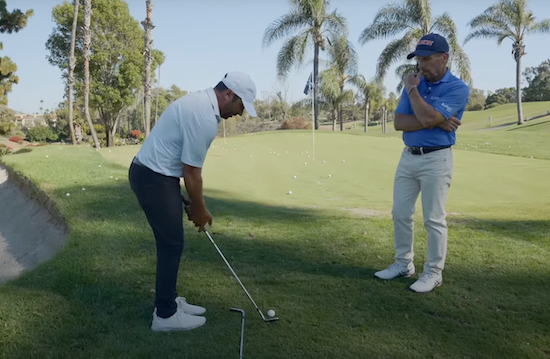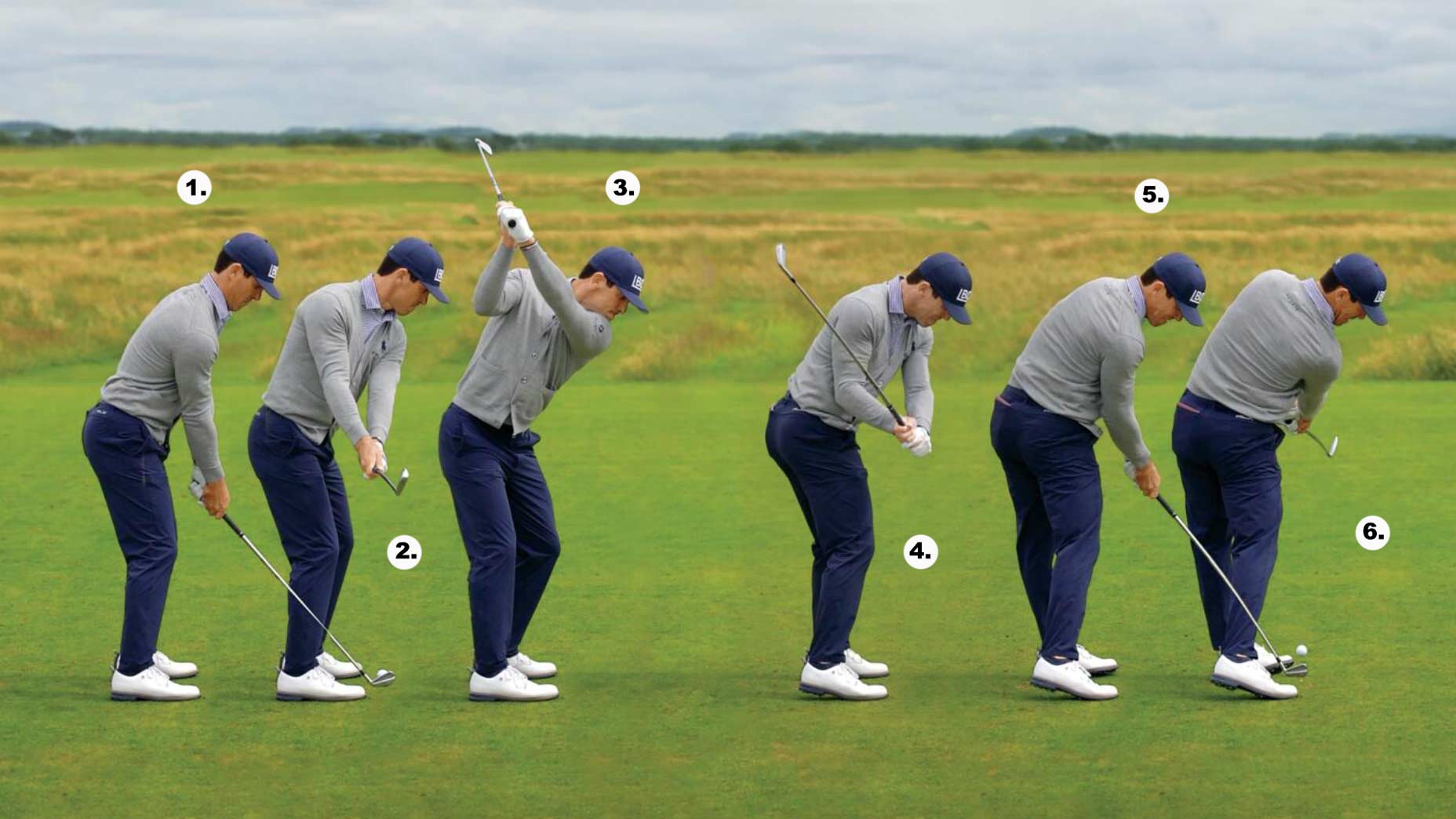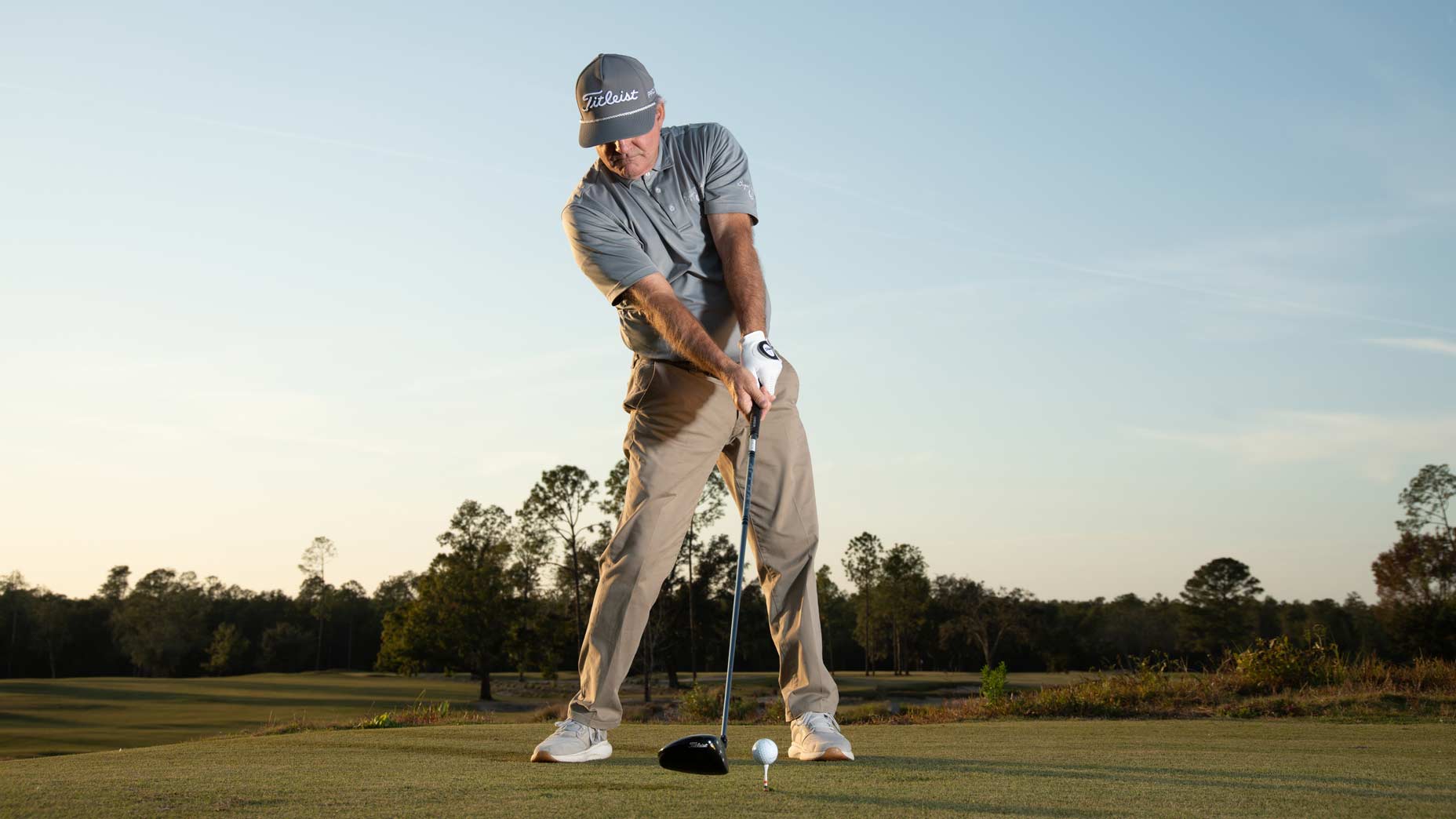Welcome to Shaving Strokes, a GOLF.com series in which we’re sharing improvements, learnings and takeaways from amateur golfers just like you — including some of the speed bumps and challenges they faced along the way.
After my round the other day, I looked at the scorecard and instantly got frustrated: Once again, I played bogey-golf, shooting a 45 on nine holes.
While I can’t be too unhappy with the result, bogey-golf has been the story of my life for the past 1.5 years, as I can’t seem to consistently score lower. I’ve taken lessons, improved my swing, found more fairways than ever, and even played around with different putter grips and types. But the results continue to stay the same.
When diving into the numbers a bit more from this most recent round, it’s clear where I need to focus more attention on: the short game.
The clever bunker hack Lee Trevino learned from Seve BallesterosBy: Nick Dimengo
On six different occasions, I had opportunities to save par by simply getting up and down. I did so on one, getting bogey or worse on the other five.
As most top teachers remind me, when you can win from 100 yards in, you’re going to give yourself a chance to play better. And until I really commit to improving my short game, it’ll continue to be an Achilles heel.
Thankfully, GOLF Top 100 Teacher Todd Sones is here to help, and walks through an in-depth lesson with fellow instructor Adam Porzak to help anyone struggling around the greens like I am. Check out their tips below.
Master your short game with this in-depth golf lesson
In the video above, Porzak references a great Ben Hogan quote that every amateur golfer needs to remember when it comes to practicing the short game, “the secret is in the dirt.”
We can tell ourselves we did enough to work on chipping and pitching, but if you’re still experiencing issues, it’s time to put even more time into this area of the game. Sure, it’s more fun to bomb drives or work on shot-shaping iron shots, but mastering the short game is the fastest way for improving scores — and Sones and Porzak provide some easy ways to do so.
Stand to the handle
In the short game, technique becomes even more important, as one millimeter can be the difference between hitting the perfect shot and chunking one. So Porzak explains why it’s important to keep the hands in front of his body during the swing motion.
“The number one thing in the setup is stand to the handle, and always keeping the center of my hands in front of the center of my body,” he says. “If I had the ball back, the handle is moving with me. If I had the ball forward, the handle is moving with me.”
By understanding this in the setup, you can determine how open or delofted the clubface should be to hit a specific shot.
No back up
Another common mistake that many amateurs make is trying to scoop beneath the ball to help it get airborne. Unfortunately, this tends to shift the weight from front to back, leading to skulled or chunky shots.
Porzak reminds viewers to simply let the club’s loft do the work in order to hit those high, soft wedge shots.
“The ball came out high and soft and landed like a butterfly with sore feet not because I helped it up, but because the loft of the club helped it up,” he explains. “I’m simply just trying to get [the clubface] back to the same place I started [at address].”
Shaft position
When it comes to shaft position in the short game, it all depends on what type of shot you plan to hit, as the shaft will look differently for a flop shot versus a bump and run.
Sones explains a simple way to gauge how much shaft lean you need depending on your shot.
“If I want to hit a lower shot, I’m going to hit the handle one ball forward of the handle I’m hitting,” Sones says.
The image below shows how to determine the shaft position for a lower shot, a neutral shot, and a lob shot.

By understanding how to use the shaft angle to your advantage, you’ll be able to increase or decrease loft, which should help you avoid leaning back — which produces poor results.
Shoulder angles
Have you ever looked at where your shoulder angles are on short game shots? If you experience inconsistency like I do, some of it can be attributed to how you setup with your shoulders.
“Here’s a big thing, my spine has to be neutral,” Sones says. “Anytime I see someone with their hands forward, that means they’re tilting back and the right shoulder [for a right-handed golfer] is down, so the bottom of the golf swing is going to be way too early.”
Ball position
Another huge element of the short game is ball position and having an understanding of how it impacts your shot type. Both Porzak and Sones discuss this, and explain how the position should change in order to hit your desired shot.
“If I get in position for a bump and run, I have the ball position off my right shoulder [for a right-handed golfer] and it’s relative to the middle of my body,” Porzak says.
A good way to measure your ball position is to base it off of your torso, using the middle of your body, armpit and shoulder as guides.
Hip and grip
In order to have control of your short game shots, Porzak says it’s critical to keep a stable lower body and rotate from the hip up. He then explains a good way to feel the proper motion — which will help you feel more connected all the way through.
“My chest and my hands move together in the backswing, my hip and my grip feel like they move together in the through swing,” Porzak says.
Perfect grip
When it comes to your short game grip, Porzak begins by explaining what a poor grip does to a player.
“It’s so common to see golfers come in with a strong right hand — it’s awful,” Porzak says. “Because they can’t go anymore underneath [the ball], they end up going over and shutting the face, feeling the need to add loft with the body and the hands doing the wrong thing.”
He then says that by presetting the shaft and using a weaker grip (with the right hand for a right-handed player), it allows more freedom to open the face and square it at impact.
“That right hand allows me to open the face more on the way back,” he says. “When it starts on top, I’m able to get it in position where the face is open. When I rotate through, it’s already enough over that it’s going to release open and not be delofted [where you feel like you need to scoop by leaning back].”
Low point
Many amateurs often make the mistake of stopping their swing short after making contact with the ball and not following all the way through. But Porzak says that mistake is adding strokes to your game, and explains why it’s so important to complete a full rotation.
“I’m hitting a chip shot, so watch that sand leave [after making contact with the ball],” he says. “That was ball, turf, past, which is a result of connection and constant rotation. If I stop rotating, momentum drops [the club] too far behind the ball, or if I back up, it causes lean.”
Club in front
Finally, Sones breaks down the importance of keeping the club in front of the trail shoulder — especially on these short game shots to improve accuracy.
“Here’s a rule for any shot — the club has to stay in front of the trail shoulder,” Sones says. “The minute you chip the golf ball and you get the club behind your trail shoulder, you’re in trouble. When I take it back, the club’s still in front of my trail shoulder, so I’m never stuck.”
Porzak then jumps in to explain why the takeaway is so important when hitting shots near the green.
“Next to the setup, the takeaway is everything,” he says. “So I put [another club] on the ground on the line of my target, and I’d just try to keep that club right out in front of me. This was something that helped me visualize that straight line [on the takeaway], and to help keep the club in front of me at all times.”
The image below shows how this.

So if you’re someone who really struggles with the short game like I do, start implementing the tips above into your practice routine. Over time, you’ll be able to get the feel for the proper setup and swing positions, helping alleviate some inconsistencies.

Titleist Vokey SM10 Tour Chrome Custom Wedge
View Product











